
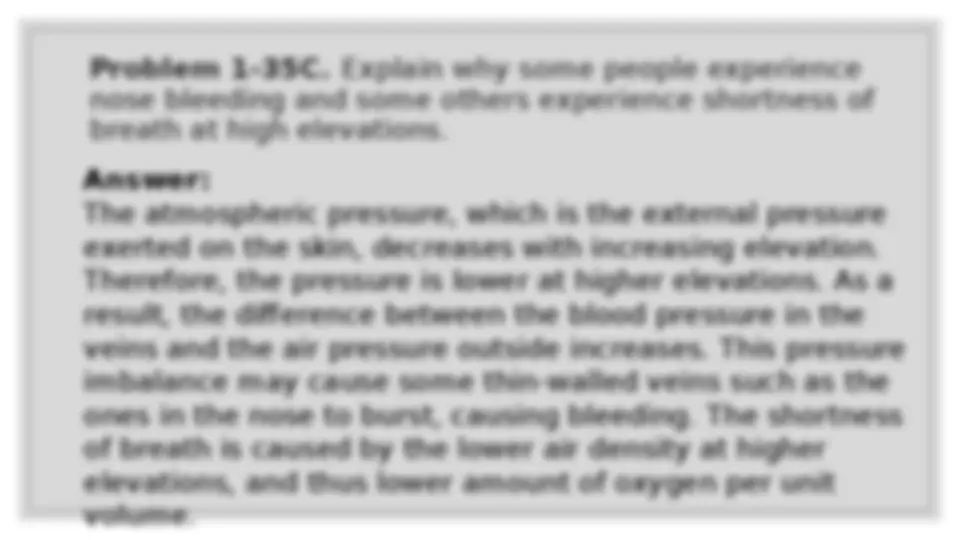
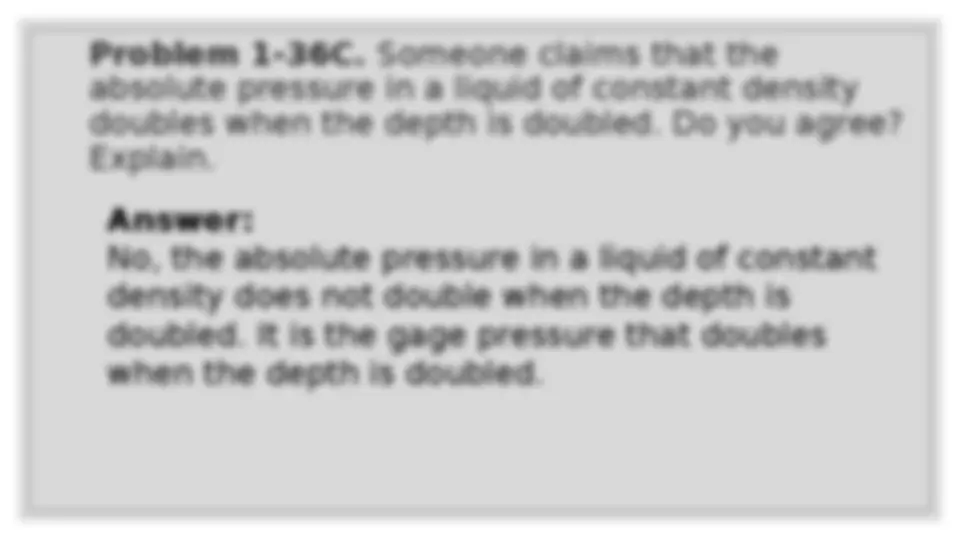
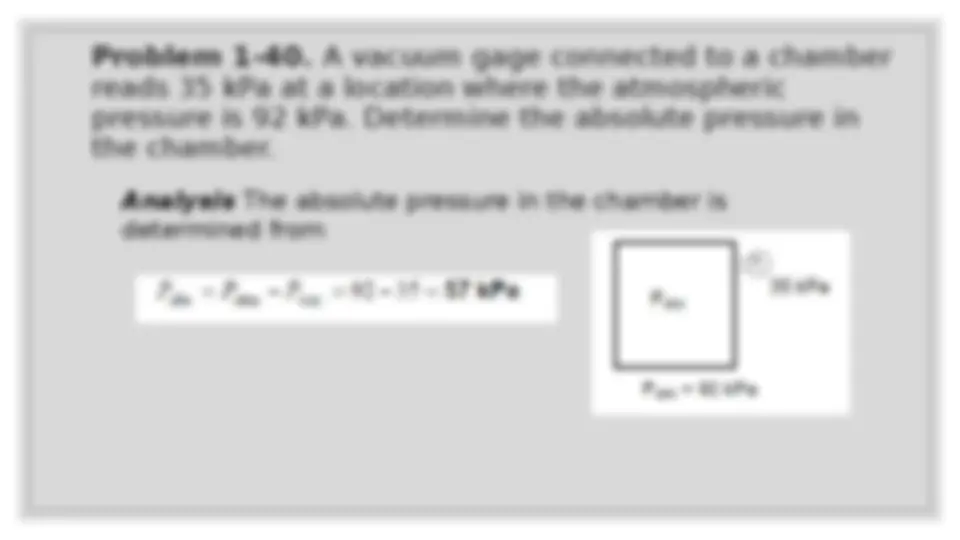
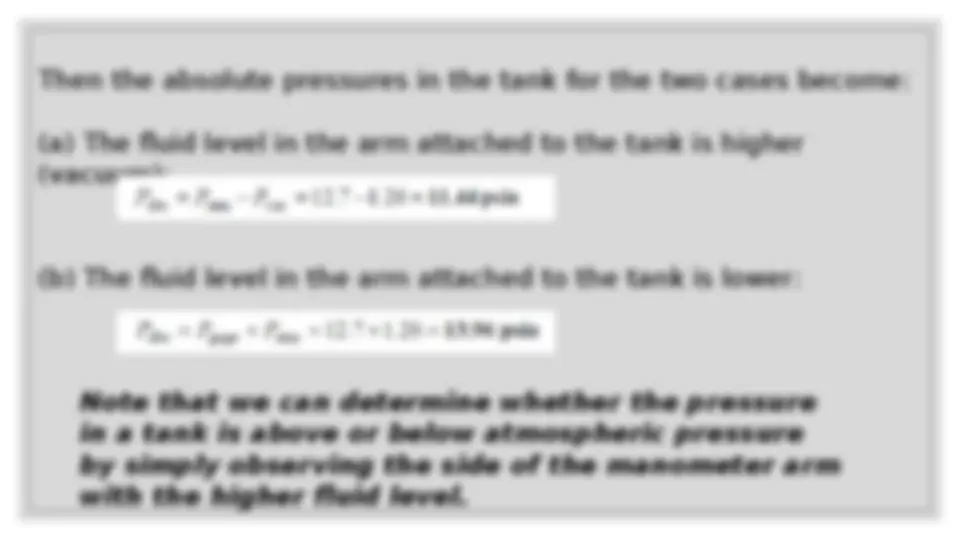
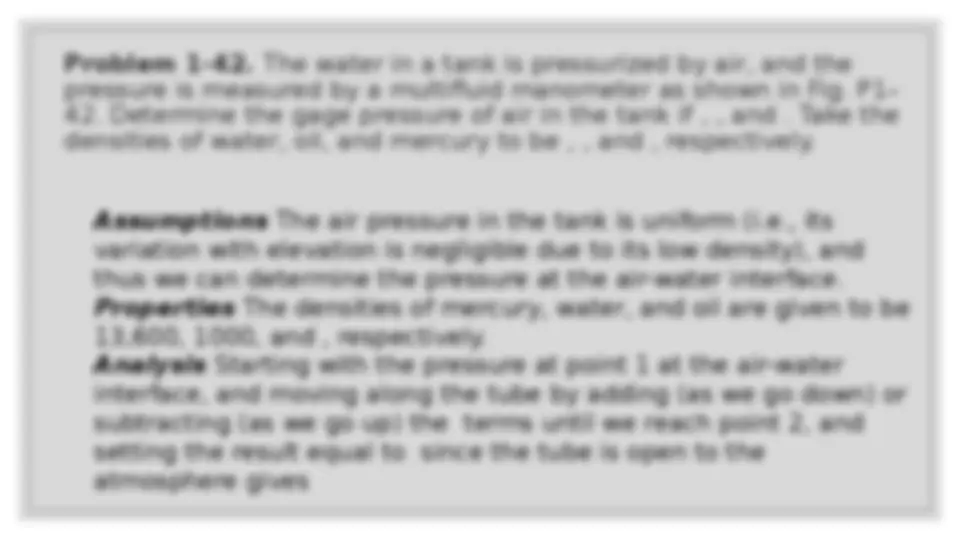
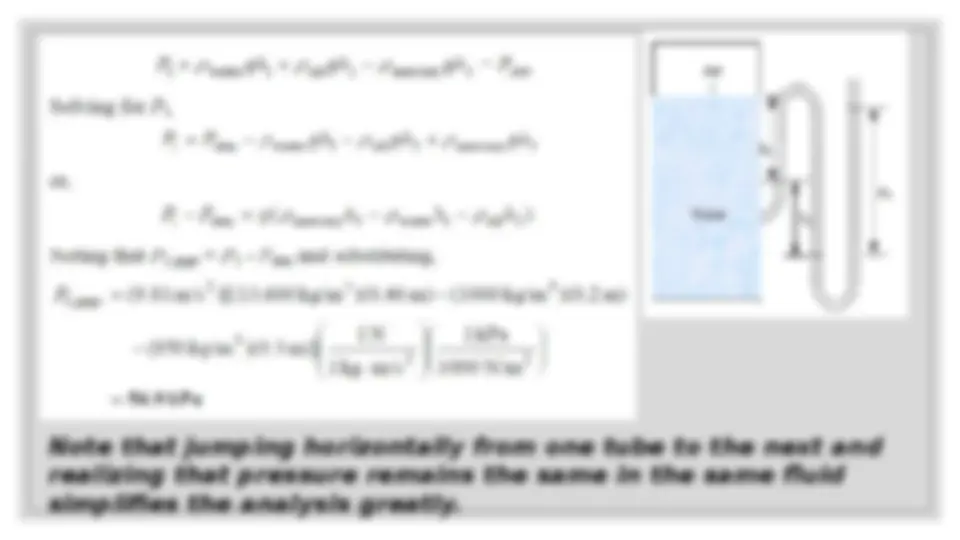
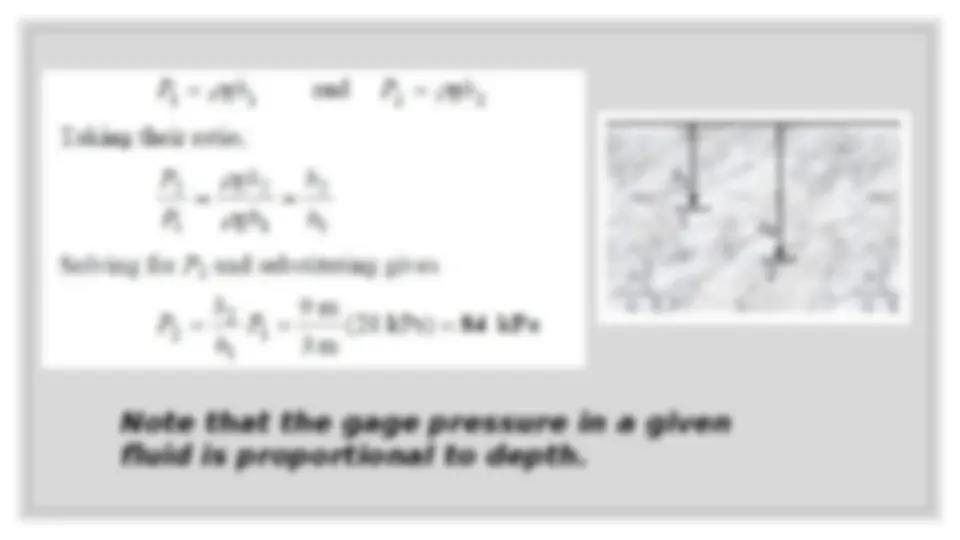
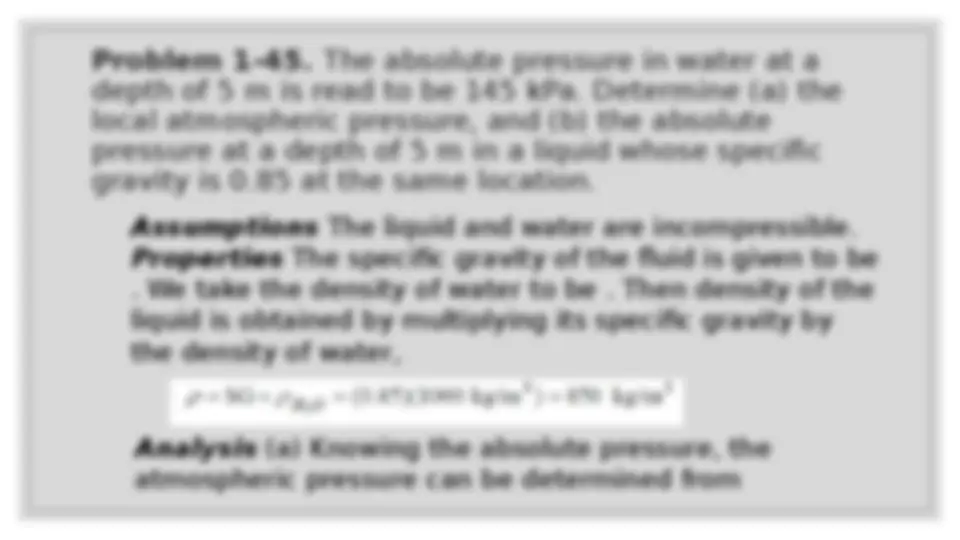
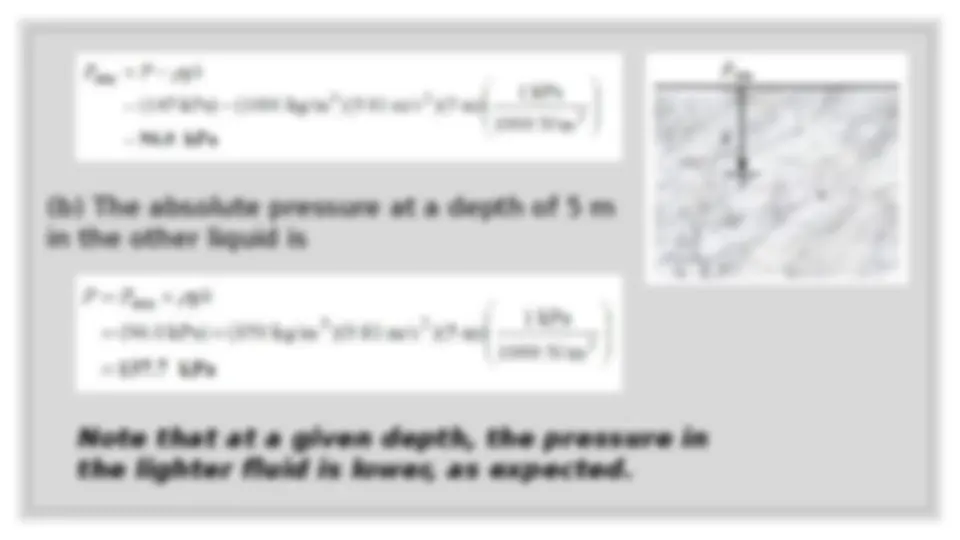


Study with the several resources on Docsity

Earn points by helping other students or get them with a premium plan


Prepare for your exams
Study with the several resources on Docsity

Earn points to download
Earn points by helping other students or get them with a premium plan
Community
Ask the community for help and clear up your study doubts
Discover the best universities in your country according to Docsity users
Free resources
Download our free guides on studying techniques, anxiety management strategies, and thesis advice from Docsity tutors
Answers to various problems related to pressure concepts in thermodynamics, including the differences between gage pressure and absolute pressure, causes of nose bleeding and shortness of breath at high elevations, and determination of absolute pressure using manometers and barometric readings.
Typology: Lecture notes
1 / 17

This page cannot be seen from the preview
Don't miss anything!










Prepared by: Adam C. Macapili
Problem 1-40. A vacuum gage connected to a chamber reads 35 kPa at a location where the atmospheric pressure is 92 kPa. Determine the absolute pressure in the chamber. Analysis The absolute pressure in the chamber is determined from
The pressure difference corresponding to a differential height of 28 in. between the two arms of the manometer is
Then the absolute pressures in the tank for the two cases become: (a) The fluid level in the arm attached to the tank is higher (vacuum): (b) The fluid level in the arm attached to the tank is lower: Note that we can determine whether the pressure in a tank is above or below atmospheric pressure by simply observing the side of the manometer arm with the higher fluid level.
Note that jumping horizontally from one tube to the next and realizing that pressure remains the same in the same fluid simplifies the analysis greatly.
Problem 1-43. Determine the atmospheric pressure at a location where the barometric reading is 750 mm Hg. Take the density of mercury to be. Properties The density of mercury is given to be. Analysis The atmospheric pressure is determined directly from
Note that the gage pressure in a given fluid is proportional to depth.
Problem 1-45. The absolute pressure in water at a depth of 5 m is read to be 145 kPa. Determine (a) the local atmospheric pressure, and (b) the absolute pressure at a depth of 5 m in a liquid whose specific gravity is 0.85 at the same location. Assumptions The liquid and water are incompressible. Properties The specific gravity of the fluid is given to be
. We take the density of water to be. Then density of the liquid is obtained by multiplying its specific gravity by the density of water, Analysis (a) Knowing the absolute pressure, the atmospheric pressure can be determined from
Problem 1-46E. Show that. Analysis Noting that , , and , we have and